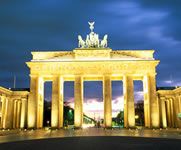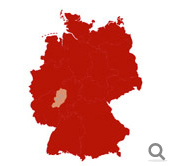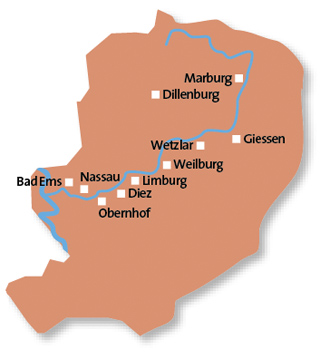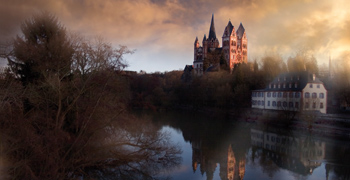
Historical Towns
- Historical towns in Brandenburg
- Cathedral Towns and Cities in Saxony-Anhalt
- The innovative Anhalt-Wittenberg Region
- Enchanting towns in the Harz
- The beautiful towns and cities in Saxony
- Towns and cities of culture in Thuringia
- Beautiful towns of Franconia
- East Bavarian traditional towns
- Alpine towns in the Allg�u
- The eastern Akpine Foothills and their towns
- Towns and villages in the western foothills of the Alps
- Mediterranean towns on Lake Constance
- Towns in the Swabian Alb
- Unspoilt towns in the Black Forest
- Towns for refined tastes in the Heilbronner Land
- Towns in the Odenwald
- Wine towns in Rheinhessen
- Saarland, a region of contrasts
- Romantic towns in the Hunsr�ck and Nahe Regions
- Idyllic towns and villages in the Moselle Region
- The Ahr Rhine Eifel holiday region
- Wine towns on the Romantic Rhine
- Modern towns and cities in the Bergisches Land Region
- The Lahn Valley and its fairytale towns
- Historical towns in Kurhessisches Bergland
- Sauerland's scenic towns
- Fairytale towns in the Weserbergland Hills
- Majestic towns in the M�nsterland Region
- The nine stars of Lower Saxony
- North and East Frisian Islands
- Vibrant Schleswig-Holstein
- Maritime towns along Mecklenburg's Baltic Coast
- Historical Hanseatic Towns
- Germany's Baltic Sea Islands
- The Mecklenburg Lakes
Contact and information
Fairytale riverscapes, floral splendour and seats of learning

Limburg
Limburg traces its history back to the time of the Merovingian kings. The town began as a hill fort in the 8th century AD and recorded an important milestone in 1150, when a new wooden bridge over the Lahn river joined Limburg with the major trading route between Cologne and Frankfurt. Limburg is one of a handful of towns in which almost every medieval building has survived intact. The entire central ensemble between the cathedral and the 600-year-old Lahn bridge stands under historic preservation. Visible for miles around, St. George's Cathedral is a masterpiece of late-Romanesque architecture with a distinctive facade of red and white that dominates the old quarter.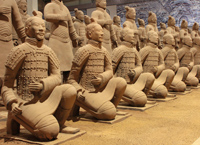
Weilburger Tunnel
The Weilburg Tunnel was built to cater for the growing demands placed on modern shipping by industrialisation. There has been no comparable structure in Germany before or since. The tunnel was dug out of Mühlberg hill in Weilburg between 1844 and 1847 and then flooded with waters from the Lahn, making the upper stretch of the river navigable and bypassing the rapids. The ensemble includes a road tunnel and rail tunnel that run alongside the shipping tunnel.The health resort of Bad Ems
St. Bartholomew's Market in Bad Ems stands apart from other traditional festivals thanks to its sensational flower parade, Germany's largest moving flower show. The market was held for the first time in 1379 during the rule of Count Ruprecht of Nassau. The custom of having a parade of floats festooned with flowers began in the 1920s. Bad Ems is a popular health resort. The Emser thermal baths provide a haven of relaxation with pools covering more than one thousand square metres and fresh spring water at a temperature of 32°C.University town of Giessen
Dating back more than 400 years, the university in Giessen is highly regarded in academic circles. The Mathematikum, the world's first interactive maths museum, combines learning with fun. Other attractions include the Altes Schloss and Neues Schloss, the original laboratory of Justus von Liebig and the Giessen Art Trail with its eye-catching collection of contemporary sculptures. At the Old Cemetery, you can visit the grave of the famous physicist who discovered the x-ray, Wilhelm Conrad Röntgen, who worked in Giessen from 1879 to 1888.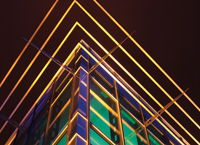
Marburg
Student life has centuries of tradition in Marburg. Philipps University, founded in the 16th century, is the oldest Protestant university that exists to this day. Marburg is also where the Brothers Grimm studied law, began the first serious research into the history of the German language and compiled their fairytale collections. These associations have earned Marburg a place on the 600km German Fairytale Route, which links fabled towns and myth-enshrouded regions. Older still is the legacy of Saint Elisabeth of Thuringia, the high-born princess who built and ran a hospital for the sick and frail of Marburg. She also gave her name to Marburg's Church of St. Elisabeth, one of the finest Gothic buildings in Germany.German Half-Timbered Houses Route
The German Half-Timbered Houses Route in the Lahn valley passes through Dillenburg, Herborn, Wetzlar, Braunfels and Limburg. You can discover a wealth of old quarters with picturesque half-timbered buildings, whose characteristic architecture highlights the medieval charm of the region.Wetzlar
Charlotte Buff, immortalised as Lotte, was the great, unfulfilled love of the young Johann Wolfgang Goethe. The great poet made her acquaintance in Wetzlar while working as a trainee for the Imperial Supreme Court. During this time he found the inspiration for his acclaimed novel, The Sorrows of Young Werther. Follow in Goethe's footsteps on a guided tour of the town visiting sites such as the Lottehaus where Charlotte Buff was born. Wetzlar was an imperial town for more than 600 years. The cathedral is the main attraction in the old quarter where there are narrow lanes, medieval squares and baroque buildings to discover.Autumn food festival in the Lahn valley
Speciality cuisine made using regional produce is the focus of the Culinary Autumn festival in selected Lahn valley restaurants. There is a particular emphasis on local lamb and beef. The animals are allowed to graze in open meadows where wild herbs grow, giving the meat a strong, distinctive flavour. A typical meal might include marinated braised veal with walnut bread dumplings accompanied by pumpkin and parsley root vegetables and followed by a Hessian tiramisu made with Boskoop apples and caramelised walnuts. Beer is also brewed in the Lahn valley and there are some fabulous fruit schnapps to aid you with digestion.Travel Planner
Select an option...
Romance and charm
Braunfels has been the seat of the Solms dukes and princes since 1246. Braunfels Castle with its mighty towers sits high above the town on a basalt hill. It's great fun to slide around the banqueting hall in protective felt slippers admiring the weaponry and knights' armour.
Food and drink
The Lahn valley is a famous source of mineral water in Germany, but also draws praise for its wines. Goethe's appreciation of Lahn wine led the locals in Obernhof to name a vineyard after him.
History and tradition
More than 3,000 years of history have shaped the Gleiberger Land region. Archaeological attractions that bear testament to its distinguished past include the Roman Forum in Lahnau and the Celtic oppidum on Dünsberg hill.
Nature and scenery
The Lahn valley is a great destination for walkers. There are 19 loop tours to choose from as well as the Lahn-Dill hills path, which runs for 86 kilometres from Herborn and Dillenburg, through Bad Endbach, to the university town of Marburg.




